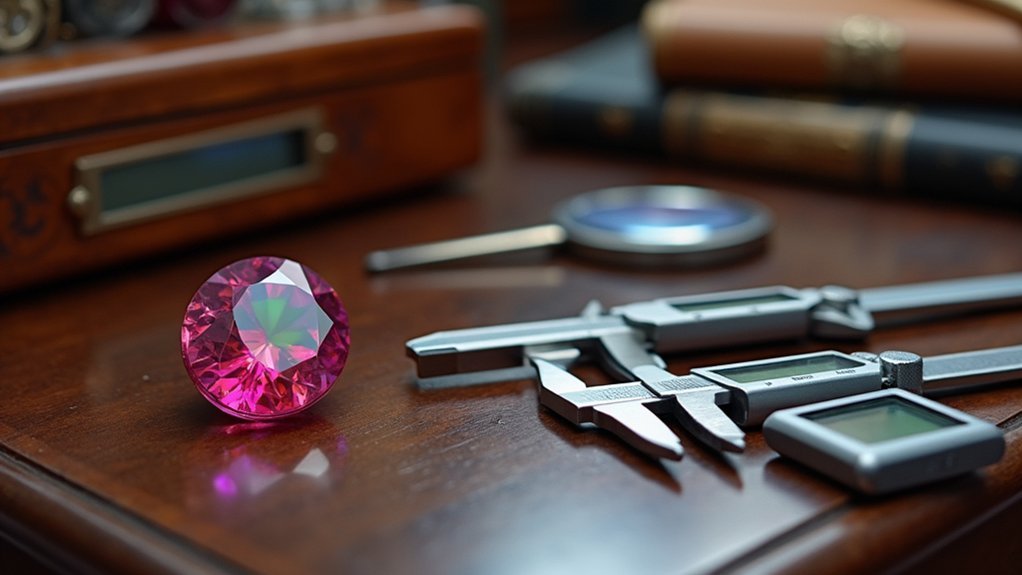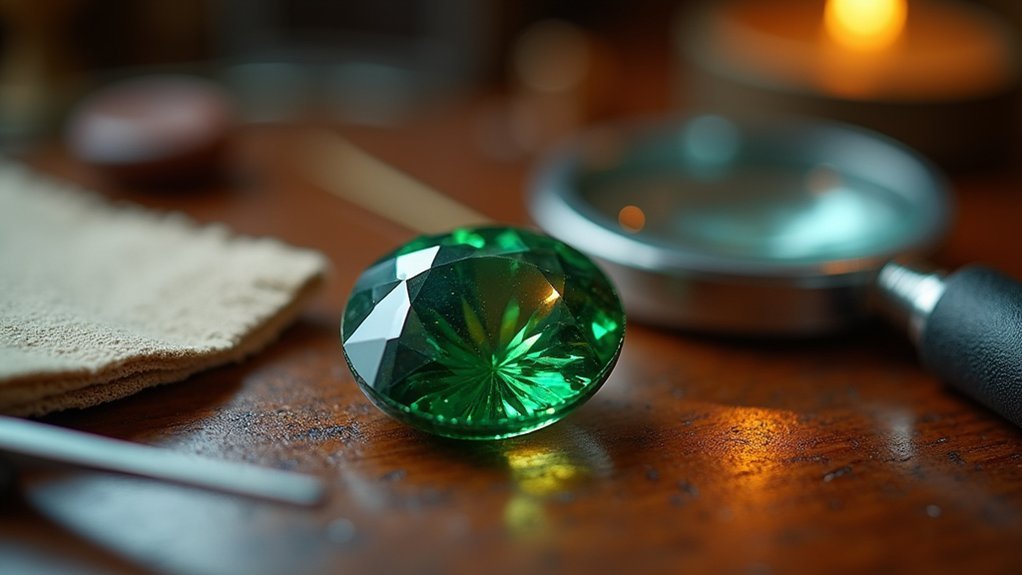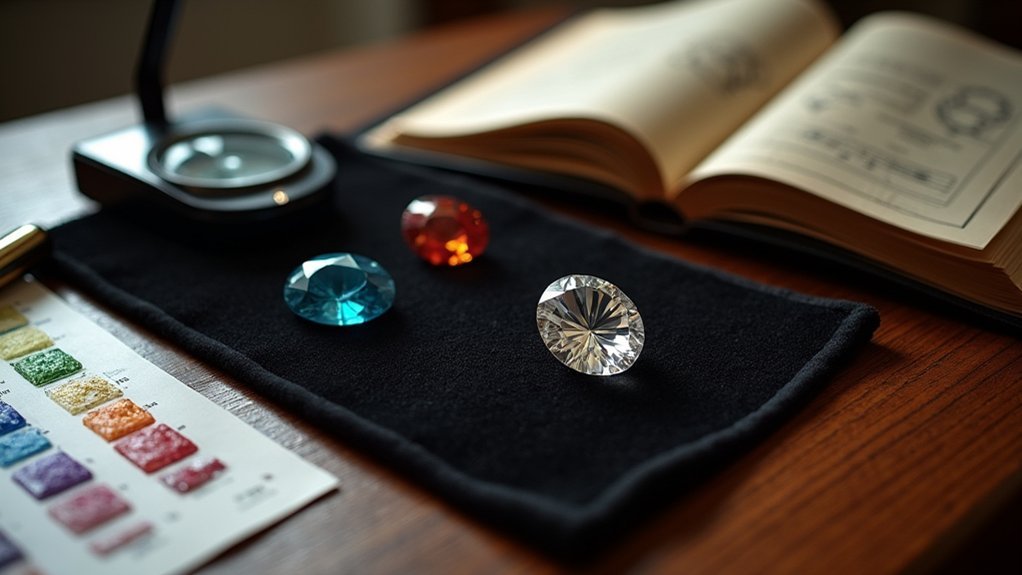You’ll need three distinct valuation approaches to accurately determine your estate gems’ worth. Professional appraisal provides certified expert assessment using gemological instruments and detailed documentation. Market-based comparative analysis uses real-world pricing data from recent sales and auction records to establish current benchmarks. Material and craftsmanship evaluation examines intrinsic qualities like the 4Cs, metal purity, and maker’s marks. Each method reveals different value aspects that single assessments often miss, and understanding their combined insights will help you maximize your gems’ true potential.
Professional Appraisal Assessment and Documentation

When you’re dealing with estate jewelry, professional appraisal assessment stands as the gold standard for determining accurate value.
You’ll need certified jewelry experts who use gemological instruments to evaluate your pieces thoroughly. They’ll assess materials, craftsmanship, brand reputation, and current market trends to determine the value precisely.
Your accurate appraisal results in detailed description documentation that includes the appraiser’s qualifications and determined worth. This credible assessment becomes essential for insurance claims, legal matters, and equitable distribution among heirs.
You should update your appraisals every two to three years to reflect market fluctuations and condition changes. The professional documentation provides the authoritative record you need for insurance purposes and estate planning, ensuring your jewelry’s value is properly recognized and protected.
Market-Based Comparative Analysis
While professional appraisals provide expert assessment, market-based comparative analysis offers you a practical approach to determining your estate gems’ current worth through real-world pricing data.
This valuation method involves comparing your gemstones with similar items recently sold through auction results, retail outlets, and online platforms. You’ll establish pricing benchmarks by evaluating gemstone quality, size, cut, and condition against market counterparts.
To conduct effective comparative analysis, you’ll need access to extensive databases and auction house records that reveal current market trends.
Understanding current demand and rarity factors proves essential, as these elements greatly impact fair market value estimates.
Unlike other valuation methods, this approach provides real-time insights into what buyers actually pay for estate gems in today’s marketplace.
Material and Craftsmanship Evaluation

Beyond market comparisons, you’ll need to examine the intrinsic qualities that form your gemstone’s foundation value through detailed material and craftsmanship assessment.
Start by checking precious metals for purity stamps like 14k gold or 925 silver, which directly impact market value.
Evaluate gemstones using the 4Cs—cut, clarity, color, and carat weight—as these fundamentals determine worth.
Look for a maker’s mark indicating renowned brands like Tiffany & Co., which commands premium pricing.
Examine craftsmanship through intricate designs and unique settings that showcase skill.
Consider historical context and provenance, as documented histories add significant value.
Schedule regular appraisal every two to three years to maintain accurate evaluation as material values fluctuate.
Detailed descriptions of these elements facilitate thorough assessment.
Frequently Asked Questions
How to Determine the Value of Estate Jewelry?
You’ll need a professional appraisal examining materials, craftsmanship, and condition. Research current market trends, document provenance, and assess gemstone quality using the 4Cs. Compare similar pieces to determine accurate market value.
What Are the 3 Main Approaches in Property Valuation?
You’ll use three main property valuation approaches: the Cost Approach estimates replacement costs minus depreciation, Sales Comparison Approach analyzes similar recent sales, and Income Approach calculates value from rental income potential.
How Do I Get Gemstones Valued?
You’ll need a certified gemstone appraiser who specializes in your stone type. They’ll examine the 4Cs, conduct gemological analysis, and provide detailed certification. Get multiple appraisals for thorough valuation accuracy.
How Do I Find Out What My Jewelry Is Worth?
You’ll need a certified appraiser to assess your jewelry’s materials, craftsmanship, and condition. Research the maker’s reputation, check current market prices online, and consider the intrinsic value of metals and gemstones used.
In Summary
You’ve now explored three essential methods for valuing your estate jewelry. By combining professional appraisal documentation with market-based comparative analysis and detailed material evaluation, you’ll establish accurate values for insurance, sales, or estate planning purposes. Don’t rely on just one method—use all three approaches together for the most thorough and reliable valuation. This multi-faceted strategy guarantees you’re making informed decisions about your precious gem investments.





Leave a Reply